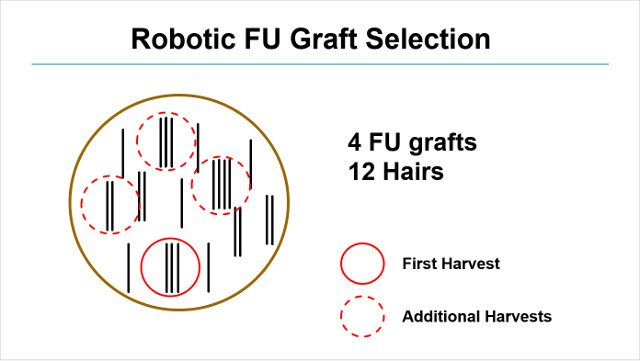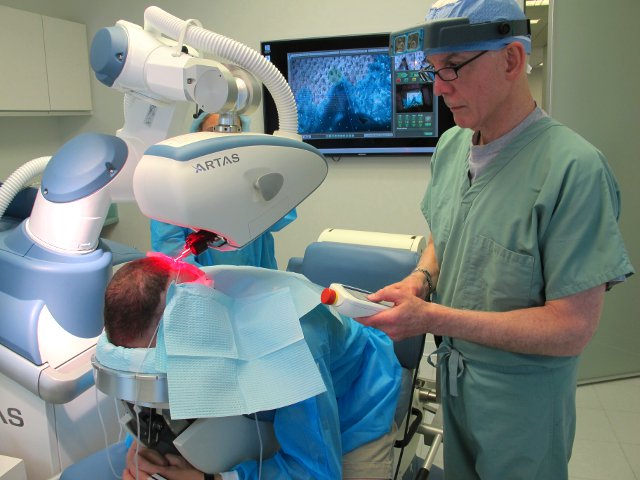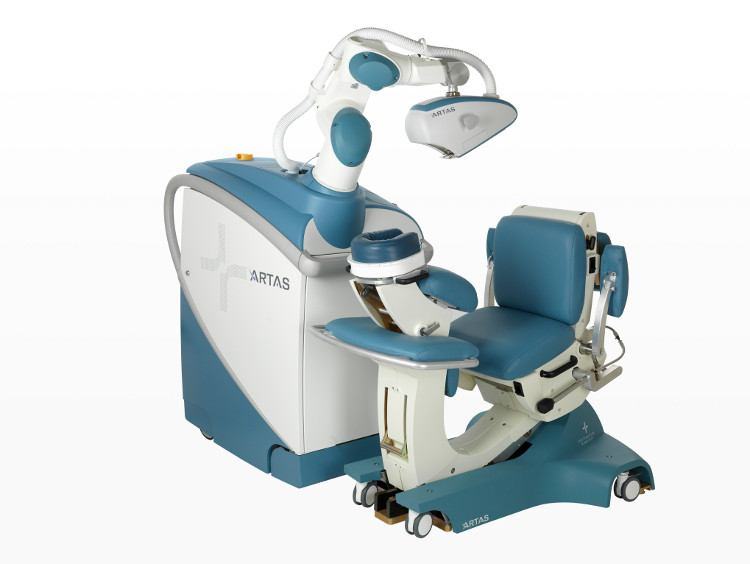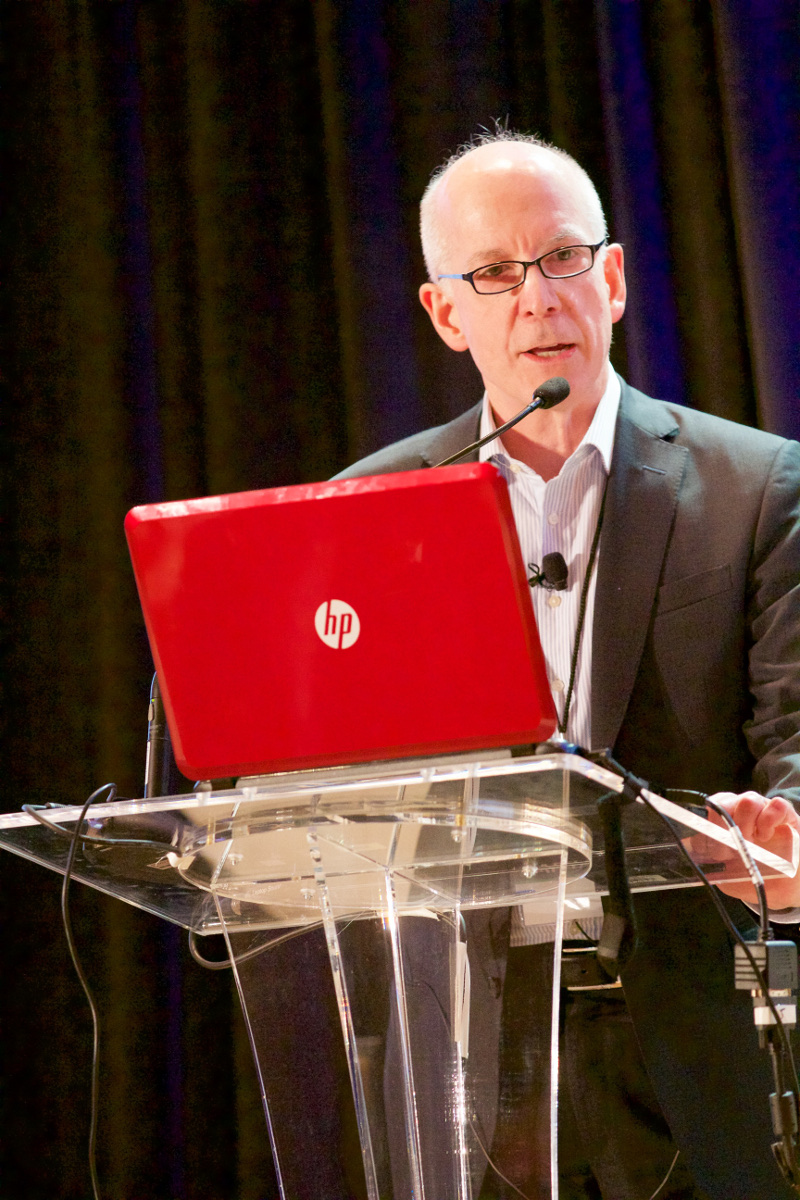Robotic Hair Transplant Pioneer Introduces Automated Graft Selection
New York, NY (PRWEB) February 25, 2015 -- Dr. Robert M. Bernstein, Clinical Professor of Dermatology at Columbia University and founder of Bernstein Medical – Center for Hair Restoration, has added robotic follicular unit graft selection to his growing list of improvements and contributions to robotic hair transplantation using the ARTAS Robotic System. In adding this new capability to the robot, Dr. Bernstein and his colleagues at Restoration Robotics, Inc. have automated another important step in the Follicular Unit Extraction (FUE) procedure, a step that until now needed to be performed by hand. The goal of the new function is for the robot to automatically obtain the maximum number of donor hairs with the least amount of wounding and the greatest cosmetic benefit for the patient. Dr. Bernstein introduced the graft selection capability at the 2015 ARTAS User Group Meeting on February 7th, 2015 in Newport Coast, CA.
How Does it Work?
In robotic graft selection, the hair restoration surgeon programs the ARTAS robot to harvest follicular units which contain two or more hairs by selectively skipping over the 1-hair units. Using its advanced optical guidance system, the robot orients itself to the scalp by way of special markings on a tensioner, a plastic frame-like device that is positioned on the donor area. Once the robotic arm is in place, the software rapidly analyzes each graft and selects the appropriate ones for extraction. It then dissects these follicular units from the surrounding scalp tissue.
The Importance of Graft Selection in FUE
In FUE hair transplant procedures, the surgeon wants to harvest as much donor hair as possible while leaving the fewest number of wounds. To minimize the number of wounds, the choice is clear: extract only the units that contain the largest amount of hair. However, smaller grafts of 1-hair are typically needed to create a natural-looking hairline and temples. By selecting and extracting larger grafts first, and then extracting smaller ones only as needed, surgeons can both minimize wounding and harvest an adequate number of follicular units of varying size so as to enhance the cosmetic benefit of the procedure. Smaller grafts can be generated by dividing the larger grafts without increasing the donor wounding.
ARTAS Robotic System: Graft Selection Capability
The ARTAS Robotic System, launched in 2011 by Restoration Robotics, Inc. (San Jose, CA), currently selects follicular units irrespective of their hair content. However, Dr. Bernstein and the robot’s software engineers have developed an algorithm that allows the surgeon more flexibility in how it selects grafts for extraction. If too few smaller units are extracted, the surgeon can either program a second pass to harvest some of the skipped over 1-hair FUs or the surgical team can dissect some of the larger units into smaller units using stereo-microscopic dissection. By enhancing the sensitivity of the graft selection software and allowing for one or two passes at extraction, the robot will be able to intelligently harvest follicular units based on the surgeon’s, and ultimately the patient’s, hair restoration needs.
Robotic Graft Selection Pilot Study Underway at Bernstein Medical
Bernstein Medical has completed an initial bilateral pilot study to determine the optimal configuration of the robot’s new capability. The study looked at robotic harvesting when graft selection is disabled, enabled with one pass at extracting follicular units, and enabled with two passes. In the two pass setting, the robot first extracts only follicular units with two or more hairs, then goes back for a second pass to extract 1-hair grafts that were skipped in the first pass. Harvesting with graft selection disabled was the control for the study.
Results showed that with graft selection enabled, both the first pass and second pass at harvesting showed improvement over the control (10.6% and 7.7% respectively) in hairs extracted per harvest attempt.
While further data is needed to determine which setting is optimal given a patient’s needs, the study serves as a proof of concept that the robot can increase the efficiency of the harvesting process by intelligently selecting grafts for extraction. The results also highlight the fact that different graft selection settings can be applied to suit a patient’s cosmetic need. The surgeon can further improve the yield by splitting larger follicular units into smaller ones using stereo-microscopic dissection. With a combination of robotic graft selection and splitting follicular units as needed, the surgeon can yield more grafts with fewer harvest attempts and thus less donor wounding.
Dr. Bernstein will continue to collect data until the sample size is sufficient to produce statistically significant results. He intends to publish his findings this year.
Automating FUE & Improving the ARTAS Robot
With his work in robotic follicular unit selection, Dr. Bernstein continues to pioneer advancements in robotic hair transplantation by improving the ARTAS Robotic System’s harvesting capabilities, making the entire procedure more compelling for patients. These techniques enhance robotic FUE hair transplants based on the hair loss characteristics of each individual patient.
About Robert M. Bernstein, MD, MBA, FAAD
Dr. Robert M. Bernstein is one of the hair restoration industry’s most lauded pioneers due to his more than two decades of dedication to the perfection of hair transplant procedures. His published articles have been called “Bibles” for the industry, and he is credited with introducing the modern hair transplant procedures, Follicular Unit Transplantation (FUT) and Follicular Unit Extraction (FUE), into medical literature. Dr. Bernstein has regularly been featured as a hair restoration expert in popular media, including: The Oprah Winfrey Show, The Dr. Oz Show, The Today Show, Good Morning America, ABC News, CBS News, New York Times, Wall Street Journal, and Men’s Health Magazine. Dr. Bernstein graduated with honors from Tulane University, received the degree of Doctor of Medicine at the University of Medicine and Dentistry of NJ, and completed his training in Dermatology at the Albert Einstein College of Medicine. Dr. Bernstein is a medical advisor to Restoration Robotics, Inc.
About Bernstein Medical – Center for Hair Restoration
Bernstein Medical – Center for Hair Restoration, founded by Dr. Bernstein in 2005, is dedicated to the diagnosis and treatment of hair loss in men and women using the most advanced technologies. The state-of-the-art facility is located in midtown Manhattan, New York City where Dr. Bernstein and his two associates, Dr. Wolfeld and Dr. Shah, treat patients from around the globe. The three board-certified physicians and highly-trained clinical staff at Bernstein Medical take pride in providing the highest level of care for all patients. Bernstein Medical is a beta-testing site for the study of new product features and enhancements in the ARTAS Robotic System and, in 2011, became one of the first worldwide to use the image-guided, computer-driven technology of the robot in clinical practice.
Barbara Werner, Bernstein Medical - Center for Hair Restoration, http://www.bernsteinmedical.com/, +1 (212) 826-2400, [email protected]




Share this article